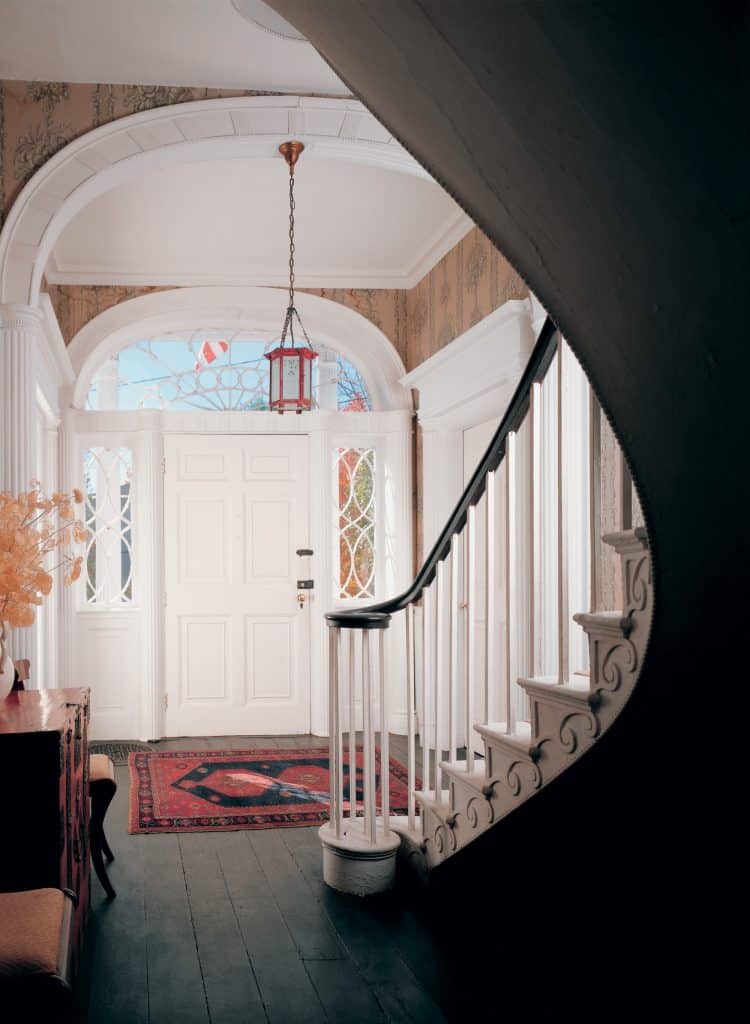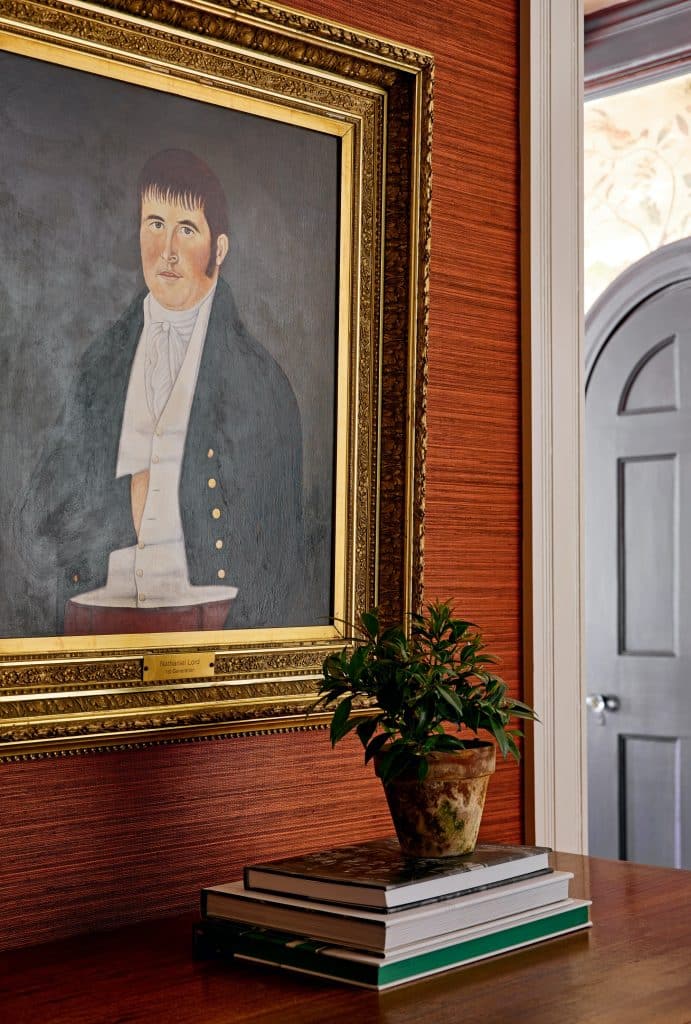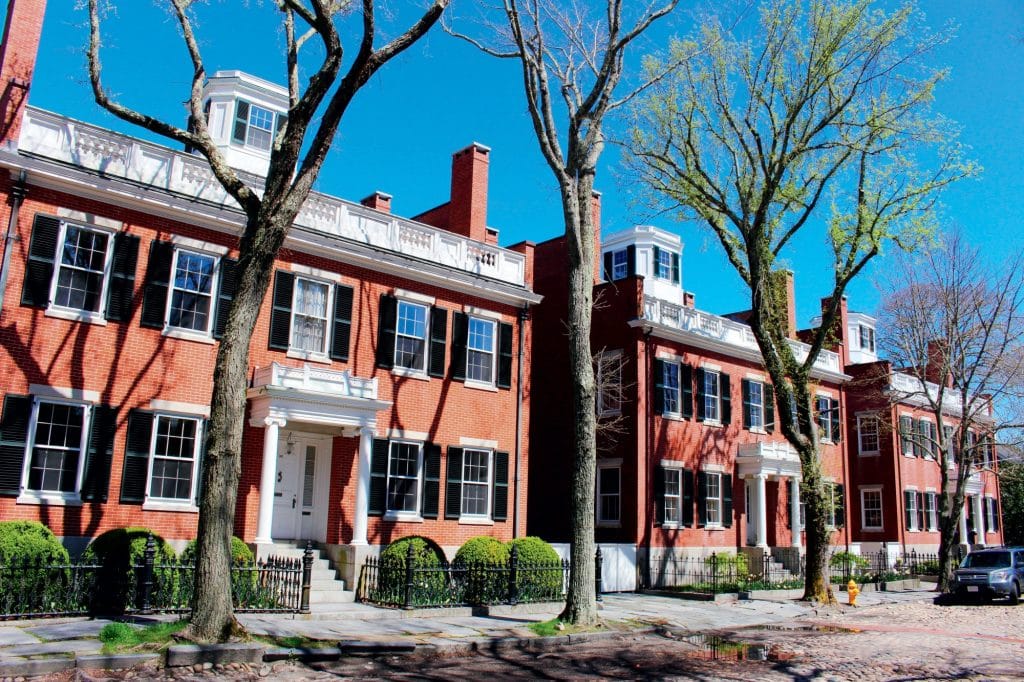The Truth About Sea Captains’ Houses
In New England’s coastal towns and cities, gracious sea captains’ homes were built as showcases of success, but as This Old House veteran Bruce Irving discovered, the full story is a little more complicated.

Coffee By Design | Portland, Maine
Photo Credit : Katherine KeenanIn young America, ports were where the money was. Roads were poor and the sea was the highway, linking the continent to itself and to the world. In New England, every bale of fur, piece of lumber, and barrel of salted cod that shipped out and every bolt of gingham, chest of tea, and keg of molasses that shipped in left a little—or a big—profit behind at the dock. The men (and they were all men) who harnessed this trade became the wealthiest people in town, and they displayed their wealth by building the finest homes, many of which still stand. But while many are billed as “captains’ houses,” the full story is a little more complicated.
From Machias to Salem, Boston to New London and everywhere in between, riches were founded on fish, timber, spices, and silks. In Nantucket, New Bedford, and Mystic, it was whale oil. Ship captains ran things while under sail, while men called supercargoes managed the trade in port, selling merchandise and buying goods for the return trip. These positions were wage-earning ones, though there was often the chance of some share in the voyage’s profits. But it was to the ships’ owners that the bulk of the profits (and the risks) accrued. These were the merchant-princes of the era: They built the vessels, raised the crews, and sent them to sea, amassing fortunes from foreign and domestic trade and employing many in their town. While some if not most had started their careers at sea—often becoming captains—it was on dry land that they became capitalists, community leaders, and mansion dwellers. They preferred the honorific “Mister” over “Captain,” reflecting their new status as gentlemen.
Spotting their homes is fairly easy. Mostly on the finest streets, usually close enough to the water to make for a convenient walk to the dock and countinghouse, sometimes with a cupola or roof walk for seeing one’s (or one’s rival’s) ship come in, they were almost always in the most derigueur style of their time. New England’s shipping heyday spanned from the mid-1700s to the early 1800s, during which architectural fashion moved from Georgian to Federal to Greek Revival. Certainly there were shipping-based fortunes still at work in the Victorian era, with all its exuberant building forms, but the classic seaport manses were in these three styles.
Robert Booth is a maritime and architectural historian and author of Death of an Empire, about the rise and fall of Salem’s shipping trade, which by 1790 had made it the richest city per capita in the young republic. For his money, there is no finer house than Salem’s Gardner-Pingree House, built in the Federal style in 1804 for merchant John Gardner Jr. by the great woodcarver and architect Samuel McIntire and considered by many to be the acme of his career.
With success at sea and a booming wholesale business on the waterfront, Gardner wanted to showcase his wealth, and McIntire delivered. A gracious three-story townhouse in Flemish-bond brick, with an elliptical columned entrance, exquisite carvings in the public rooms, and handsome carpets and imported wallpaper throughout, the house displays McIntire’s role as chief designer and coordinator, bringing together the best craftspeople, artists, retailers, and furniture-makers to create a full aesthetic experience. (Booth is partial to the house for another reason. A later owner, Captain Joseph White, who’d made his money in maritime trade, including the slave trade, was murdered in the house in 1830, a horrific “crime of the century” Booth documents in his book.) The Gardner-Pingree House is part of the Peabody Essex Museum and is open to the public.

Photo Credit : Historic New England

Photo Credit : Historic New England
Up in Wiscasset, Maine, 43-year-old shipping magnate William Nickels commissioned a housewright to build a grand Federal-style mansion in 1807. Its flushboard front facade, with its imposing stack of columned entry, Palladian window, and third-floor semicircular window, all topped off by a cornice of double-coursed dentils, made it clear that its owner had arrived. Alas, his departure was far sooner than he would have hoped. In the span of eight years, he lost his fortune in Jefferson’s Embargo of 1807 and the War of 1812, his wife and eldest daughter died in an epidemic, and he himself died in 1815, leaving his remaining children in debt. That the house was operated as a hotel from 1820 until its purchase in 1899 as a summer home by Cambridge, Massachusetts, industrialist Alvin Sortwell illustrates the shift away from shipping to tourism in the state. Now operated by Historic New England, the Nickels-Sortwell House is open to the public, with its original rear ell equipped for vacation rental.
The ruinous effect of the embargo and war is also revealed by another fine home down the coast in Kennebunkport. When all maritime commerce ceased and his shipyards went idle, shipbuilder Captain Nathaniel Lord put his men to work in 1812 building a new home for him and his family. Its graceful, unsupported elliptical staircase is a testament to their skills. The house passed through seven generations until 1972, when it became an inn. Now part of the Kennebunkport Captains Collection, it and three other captains’ mansions have been unified into one 45-room resort by Lark Hotels.

Photo Credit : Lark Hotels

Photo Credit : Read McKendree. Painting courtesy of Historic New England /Bequest of Frances Sortwell
Financial ruin, illness, even murder—while the gentlemen captains faced plenty of risk ashore, it was far more dangerous for the crews they dispatched to the corners of the globe. Almost routinely, sailors would be lost overboard or to exotic diseases or to the predations of pirates; ships sank in storms with the loss of all hands. “These ship owners,” Booth says, “had to walk the streets of their towns and see the widows and orphans they’d helped create. It mustn’t have been easy.” In seafaring Wiscasset, concern for the town’s widows and their children led to the formation of the country’s very first women’s club, still in operation as the Wiscasset Female Charitable Society.
In 1820, the whaler Essex out of Nantucket was stove in by one of its quarry, setting the survivors adrift and into a nightmare of starvation and cannibalism that became the basis of Melville’s Moby-Dick. Mary Bergman, executive director of Nantucket Preservation Trust, posits this tragedy and many others may well have been on whale-oil merchant Joseph Starbuck’s mind when, in 1836, he commissioned three identical brick homes—now known as the Three Bricks—to be built side by side on upper Main Street for his three sons. “He did not want them to have to go to sea,” she says, and they didn’t, each building a successful career in the family business. On an island full of homes built on the riches of the sea, their three residences are at the top of the heap, as restrained examples of the Greek Revival style.

Photo Credit : Tribune Content Agency LLC/Alamy Stock Photo
Given all this history, what are we to make of the abundance of so-called captains’ houses along the streets of coastal New England? Robert Booth has a theory: romance. As their fortunes waned, seaport towns needed to attract tourists and homebuyers. “It was a lot better to conjure up images of swashbuckling captains—think Errol Flynn—than some finely dressed gentleman making his way down to his countinghouse to check on his profits.” Out on Nantucket, the impulse lives on: Mary Bergman says her office gets plenty of requests from homeowners who want to tap into the island’s salty past. “They want to see a whaling captain’s name memorialized on the exterior of their house, yet these men were at sea for four years or more at a time. It was their wives and family who did most of the living in these homes.”
Pardon the pun, but perhaps the best way is to take it all with a grain of salt. Though hundreds of years dead, these were complex people living complex lives, perhaps even more complex than yours or mine. Think of them in all their humanity as you walk down the streets as they once did, past the places they once called home.
This feature first appeared in the March/April 2023 issue of Yankee Magazine
Bruce Irving is a home renovation consultant, real estate agent, and author with nearly 35 years’ experience with houses, including 17 as producer of the television series This Old House and its sister shows, where he earned an Emmy and learned the hallmarks of quality design and construction. Bruce writes about architecture and design for several publications and is the author of New England Icons, a book about the region’s built environment.








Nice post. I learn something totally new and challenging on websites